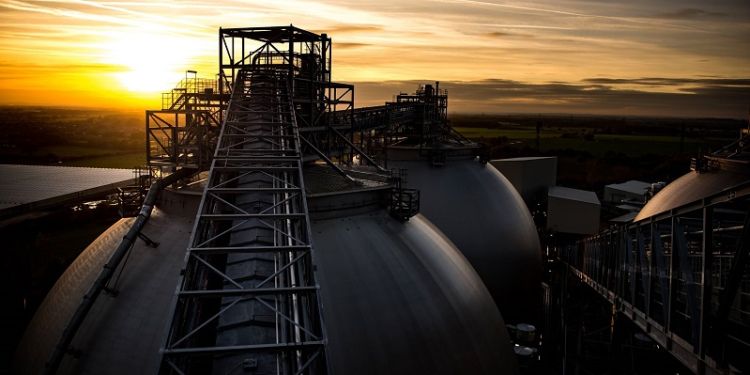Funding boost for C-Capture’s green technology

A spin out company from the School of Chemistry has received Government funding to extend its pioneering work in carbon capture technology.
C-Capture, founded by Professor Chris Rayner of the School of Chemistry, has been awarded £5 million to investigate ways of scaling up its pilot plant at Drax Power Station in North Yorkshire, which has shown it is possible to use a solvent to ‘wash’ the greenhouse gas CO2 from gas emissions.
Drax uses wood pellets to fire its generators. The gases from the combustion process contain CO2 – and the pilot plant, which has been operating since February, show that the CO2 can be removed from gases that would otherwise pass into the air.
Drax wants to harness the carbon-capture technology to become the world’s first negative emissions power station in the 2020s – effectively removing CO2 from being emitted into atmosphere at the same time as electricity is being produced.
The £5 million grant will enable:
- An extension of C-Capture’s existing pilot facilities at Drax Power Station.
- Plant performance optimisation trials
- A chemistry validation and testing programme with world-class research partners SINTEF and the CO2 Technology Centre Mongstad, in Norway.
- Process design development to move towards commercial scale deployment, including re-purposing the existing Drax infrastructure for BECCS.
This award represents a vote of confidence in the scheme and will give C-Capture and Drax Group a clearer understanding of how the technology could be scaled up in the 2020s, enabling Drax Power Station to capture and store up to 16 million tonnes of carbon dioxide each year.
The funding has been awarded by the Department of Business, Energy and Industrial Strategy (BEIS) through its Carbon Capture Utilisation and Storage (CCUS) Innovation Programme.
Cutting edge technology to capture carbon will cut emissions as we work towards a net zero economy while creating new jobs
Chris Skidmore, the Minister for Energy and Clean Growth, said: “Cutting edge technology to capture carbon will cut emissions as we work towards a net zero economy while creating new jobs – a key part of our modern Industrial Strategy. This innovative project from C-Capture and Drax represents a major milestone in efforts to rollout carbon capture at scale by the 2030s.”
The technology that we have developed is a game changer for carbon capture.
Caspar Schoolderman, COO and Project Lead at C-Capture said: “The on-going support from BEIS and our shareholders – BP, Drax and IP Group - has allowed C-Capture to build a team with unique skills and capabilities. The technology that we have developed is a game changer for carbon capture. Drax Group’s expertise in re-purposing existing infrastructure and C-Capture’s novel CCUS solution could allow the cost-effective deployment of bioenergy and carbon capture and storage for the first time on an industrial scale anywhere in the world.”
Aimed at supporting projects which can help deliver cost effective carbon capture initiatives which could then be used in industrial applications, the BEIS funding will help the UK to lead the world in developing CCUS technologies.
Will Gardiner, Drax Group CEO, said: “If we scale C-Capture’s BECCS technology up at Drax across all four of our biomass generating units, the impacts will be far reaching. As the world’s first negative emissions power station, Drax could become the ‘anchor’ for a CCS network in the Humber region, capturing carbon from other nearby industrial emitters as well as our own CO2. C-Capture’s technology could enable us to not only make a real impact on reducing our own carbon emissions, but also to deliver clean growth and jobs across the north, as well as new export opportunities for the UK making this project of major significance globally.”
Drax Power Station is already the largest decarbonisation project in Europe having converted two thirds of its generating units to use biomass instead of coal.




